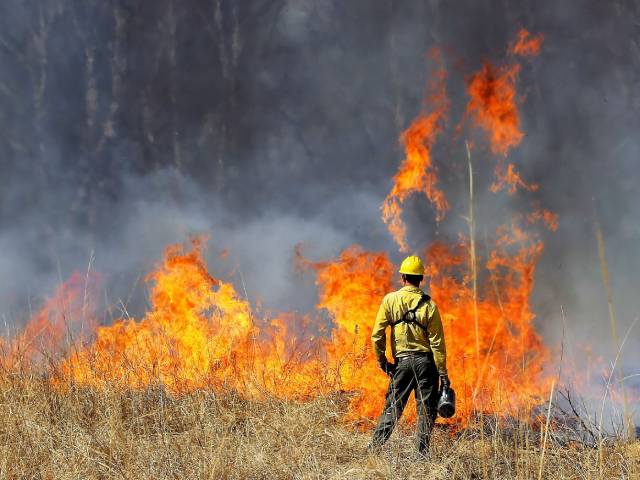

It might sound odd to say that intentionally starting forest fires can be a good thing, but it’s true. This is what prescribed fires are—controlled forest burns that professionals perform to promote forest health. Learn five fascinating facts about the process below!
It might sound counterintuitive, but prescribed burns actually reduce the risk of large, uncontrolled wildfires. By setting carefully monitored fires, forest managers can eliminate excessive amounts of dry, flammable underbrush and dead vegetation. This removal of potential fuel sources significantly decreases the likelihood that future fires will erupt unexpectedly and become fierce infernos.
Given that climate change is making wildfires more of a risk, and considering the inequitable impact of climate change, it’s more important than ever to proactively prevent its most dangerous impacts.
Fire can kill vegetation, but it can also promote its growth. Fire helps certain plants germinate and grow by breaking down the seed coat or triggering the release of seeds previously locked away in cones or pods. Species like the lodgepole pine and some native grasses have coevolved with fire as a natural element of their reproductive cycles. Without prescribed burns, these plants wouldn’t regenerate properly, leading to less biodiversity in the forest ecosystem.
When we talk about prescribed fires, it’s not as simple as lighting a match and watching the blaze. Forest experts meticulously plan every aspect of the burn, taking into account weather conditions, terrain, and the types of vegetation present. They establish firebreaks to contain the fire within a designated area, clearing the area with heavy-duty equipment, such as the FYREBX T3. Once the blaze is in motion, crews remain on standby to manage and conduct the operation safely.
Fire plays a vital role in the rejuvenation of forest nutrients. A controlled fire returns nutrients, like nitrogen, phosphorus, and potassium, back to the soil, enriching it and promoting new plant growth. The resulting comeback of vigorous vegetation after a burn supports forest health and provides fresh food sources for the wildlife. Ultimately, this nutrient recycling keeps the ecosystem thriving.
Not all prescribed burns are the same. Different techniques cater to varied environmental goals and forest types. For example, surface fires burn the leafy forest floor, while understory fires consume small vegetation below the forest canopy without much damage to larger trees. Alternatively, pile burns involve gathering vegetation and burning it in a concentrated location. Each method serves a specific purpose, from reducing fuel load to rejuvenating habitats.
We hope these facts about controlled forest burns have highlighted how prescribed fires are indispensable tools in forest and ecosystem management. By reducing fire risks, supporting plant life, maintaining ecological balance, and recycling nutrients, these carefully orchestrated interventions can sustain natural environments.
24World Media does not take any responsibility of the information you see on this page. The content this page contains is from independent third-party content provider. If you have any concerns regarding the content, please free to write us here: contact@24worldmedia.com
